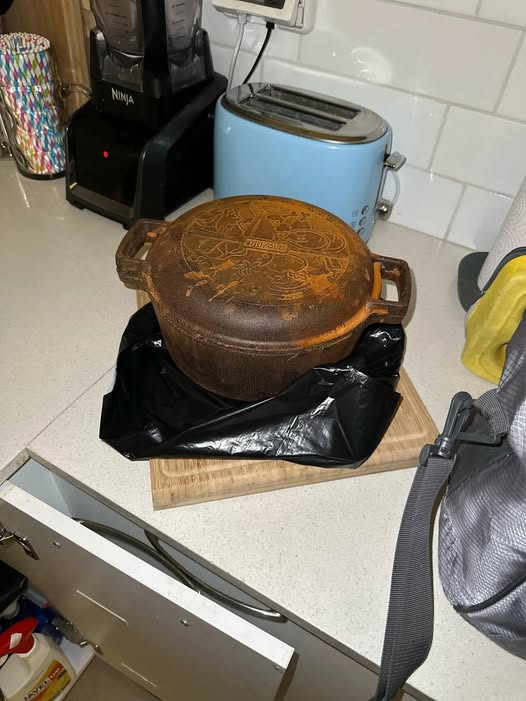I’ve always been a big fan of cooking with cast iron. Whether I’m whipping up breakfast, making a quick lunch, or preparing a hearty dinner, my cast iron skillet is my go-to tool in the kitchen. There’s something about the way it heats evenly, develops that perfect sear, and adds depth to food that just can’t be matched by other types of cookware. Plus, when properly cared for, cast iron can last not just for years but for generations.

It’s durable, reliable, and gets better with time—what’s not to love? But as much as I adore using cast iron, I’ve also learned over the years that there are a few things you just shouldn’t cook in it, especially if you want to maintain the seasoning and avoid funky flavors or unwanted reactions. One big no-no when it comes to cast iron cooking is highly acidic foods. This includes things like tomatoes, vinegar-based sauces, and lemon-heavy recipes. Acidic ingredients can interact with the cast iron surface, even if it’s well-seasoned, and cause the metal to leach into your food, leaving behind a sharp, metallic taste that’s anything but appetizing.
I once tried making shakshuka, which is a tomato-based dish, in my cast iron skillet, thinking it would be fine. Spoiler alert—it wasn’t. The dish ended up tasting like metal, and I realized that even well-loved cast iron has its limits. It was a hard lesson, but one that stuck. Since then, I’ve saved acidic recipes for my stainless steel pans, and I recommend you do the same. Another category to watch out for is super fragrant foods. I’m talking about fish with a strong odor, pungent cheeses, and dishes with a heavy dose of garlic or onions.
While cast iron can handle bold flavors during cooking, those smells can sometimes cling to the pan’s surface, even after a good cleaning. Sure, you can try baking your skillet at 400 degrees Fahrenheit for about 10 minutes to burn off the lingering smells, and that usually works—but not always. I’ve had moments where, even after that, the next thing I cooked had a faint fishy scent that definitely wasn’t supposed to be there. It’s just not worth the risk if you’re switching between delicate dishes and heavily seasoned or odorous meals.
Then there are eggs. Now, I know people love to talk about how well-seasoned cast iron becomes naturally non-stick, but let’s be honest—cooking eggs in a cast iron pan is a gamble. Unless your skillet is seasoned to perfection and heated just right, you’re probably going to end up with a stuck-on, crispy mess. I’ve tried it more than once, and more than once, I’ve ended up scraping scrambled eggs off the bottom of the pan and ruining breakfast. It’s just not worth the cleanup or the frustration. When I want eggs that are light, fluffy, and perfectly cooked, I always reach for a non-stick pan. It’s easier, faster, and makes a big difference in the final result.
Despite these few exceptions, cast iron is still one of the most versatile and beloved tools in the kitchen. You can cook just about anything in it—from steak and cornbread to stir-fry and roasted vegetables—and the results are often nothing short of delicious. The key is knowing when to reach for cast iron and when to use another type of pan. By keeping acidic, overly fragrant, and delicate foods like eggs out of your cast iron, you’ll help preserve the pan’s seasoning, extend its life, and ensure that every meal you cook in it tastes exactly the way it should. So go ahead and keep your cast iron skillet in heavy rotation—just be a little selective about what you cook in it, and it’ll reward you with years of faithful service.





